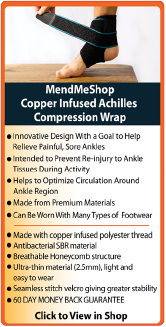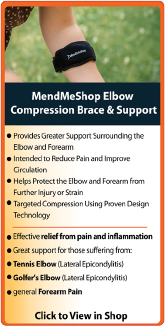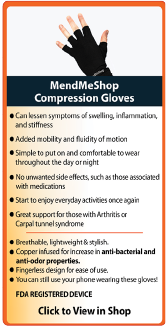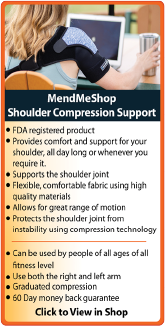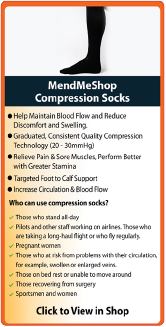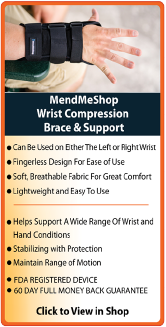|
| Patellar Tendonitis (Jumper's Knee)Symptoms of Patellar Tendonitis You might be suffering from Patellar Tendonitis if:
 If any of those statements are true for you or you're suffering from on-going pain under your knee cap (patella) then you might have an injury called "Patellar Tendonitis". This type of tendonitis is usually an injury that athletes get, but it can happen to individuals who aren't athletes as well. Anyone - young or old - can suffer from this injury, and if you're active this condition will keep you from doing the things you love to do. It will even start interrupting your normal daily tasks and make living life harder than it really needs to be. Patellar Tendonitis CausesTendonitis is a condition that is micro-tearing in the tendon tissue. When the knee is overworked or overstressed the damage to the soft tissue is done. Jumpers knee is most common in an aging athlete who is involved in 'jumping' sports such as basketball, volleyball and jogging. Patella Tendonitis can be caused by repetitive use of the patellar tendon, but can also be caused by trauma such as a blow to the knee. This condition is most common in an athlete who is involved in "jumping" sports such as basketball, gymnastics, figure skating, and volleyball. Other risk factors include: There are a variety of internal and external causal factors for patellar tendonitis. Some outside factors would include overuse of your knee, wearing shoes that don't give you proper support, or athletic activity / exercising too much, too fast or for too long. Some internal factors include your age, flexibility, and the natural alignment of your feet, calves, knees and thighs. 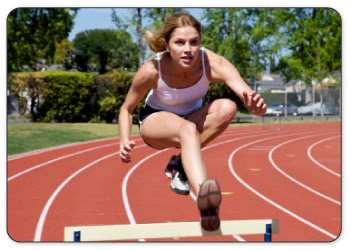
The Patellar Tendon The knee joint is made-up of 4 bones: the femur (thigh bone), fibula & tibia (shin bone), and the knee cap. The knee cap is a sesamoid bone, which means that it is a bone that's embedded in a tendon. For the knee cap this means that above the knee cap is the quadriceps tendon and below the knee cap is the patellar tendon. The patellar tendon attaches the knee cap, quadriceps tendon and quadriceps muscle to the shinbone below the knee. All of these elements work together to function as the "quadriceps mechanism" to help you when straightening your knee / leg. The patellar tendon plays an important role in the way you use your leg muscles. The patellar tendon helps your muscles extend your knee so that you can kick a ball, run uphill and jump up in the air. This is why patella (patellar or 'infrapatellar') tendonitis is often called 'Jumper's knee'. Patellar TendinopathyJumper's Knee and patellar tendinopathy is a general term used to describe any kind of injury that causes irritation, tearing, or inflammation in the patellar tendon. There are different kinds of patellar tendinopathy that can happen that will influence how long you suffer from this injury, what type of treatment is needed and how to prevent further injury to your patellar tendon.  Patellar TendonitisShort-term inflammation in the patellar tendon is considered 'patellar tendonitis'. This is where the tendon becomes frayed or torn from an incident (like playing sports / running), or over-use (repetitively participating in the same activities). You may partially or completely tear your patellar tendon. If you completely tear your patellar tendon, your tendon will no longer be attached to your knee cap (patella). Without that attachment you won't be able to straighten your knee. Partial tearing usually happens to the middle of the patellar tendon, while complete tearing often happens where the patellar tendon connects to the knee cap (patella).  Patellar TendinosisPatellar tendinosis happens when the tendon gets worn out over a long period of time (from overuse or aging of the tissue) and becomes damaged. This type of injury causes the tendon to thicken and micro-tear. Usually with tendinosis there isn't a lot of swelling or inflammation, just chronic, long-lasting pain. Patellar TenosynovitisIf the protective lining of your tendon (called the 'tendon sheath') becomes irritated or damaged this is called 'tenosynovitis'. This condition happens to the inner lining of the sheath, and this irritation can happen from injury, overuse, or repetitive tasks. Patellar Tendonitis DiagnosisA visit to your doctor is the best way to know if you have patellar tendonitis. To properly diagnose your knee pain your doctor will ask about your medical history, your current condition and symptoms. They will ask your about the intensity of your present pain, how long you've had these symptoms and the limitations you're experiencing. Details about what you think may have caused the problem, when it started, and whether or not you have ever had treatments for this or a similar condition in the past, are very helpful in assessing your injury.  There are 2 tests your doctor may perform to decide if you have a patellar tendon injury:
Both of these physical tests will help your doctor to determine a correct diagnosis of your knee pain. If for any reason the test(s) don't help to discover the source of your pain, then diagnostic testing (an X-ray and/or MRI) will be ordered. These tests are also often used to rule out other conditions.  X-rays will provide a 2-dimensional image of the overall structure of your knee. They're helpful in identifying knee instability, abnormal bone shapes (bone spurs or bone cysts, fractures, wear and tear on the joints). MRIs (magnetic resonance imaging) will provide more detailed information and will help to evaluate the soft tissues in and around your knee (muscles, tendons, ligaments, menisci and other connective tissues). It can identify ligament or tendon damage, and can help to determine the extent of your injury, the displacement and degree of your tear or inflammation, as well as other associated knee conditions. Conservative Treatment Options for Jumpers Knee (Patellar Tendinitis)The best way to treat patellar tendonitis is to rest the area, especially avoiding the particular activity that produced the condition. If the strain was minor, the body should be able to heal the tendon fibers normally. Unfortunately, this is not the usual result, due to the injured tendon being used instead of rested. The body heals the injured patellar tendon fibers by binding them together with fibrotic adhesions, or scar tissue. This is a normal, protective response of the body, done in an attempt to prevent further damage to the injured area. Unfortunately, this leads to inflexibility in the knee and possibly chronic knee problems. Although steroid injections may provide temporary relief from the pain of an hamstring tendon or muscle injury they should generally be undertaken with caution as they weaken the tendon/muscle and may lead to a complete rupture. If you do opt for an injection, doctors usually recommend that you do not participate in strenuous activities for several weeks to reduce the risk of a rupture. To view more information about conservative treatments for patellar tendinitis, please go to our patellar tendinitis treatment page on aidyourtendon.com.During your recovery, you will probably have to modify and/or eliminate any activities that cause pain or discomfort in your knee area until your pain and inflammation settle. The more diligent you are with your treatment and rehabilitation, the faster you will see successful results! With these simple therapies you will notice incredible results in your knee. Remember: We recommend that you visit your doctor and/or physiotherapist before using any of our outstanding products, to make sure they're right for you and your condition. Product specialists are available 9:00 am to 5:00 pm Eastern Standard Time Monday to Friday. If any question or concern arises, call us or simply send us an email at any time (we check our emails constantly all throughout the day and night.. even on holidays!). We will respond as soon as possible. North America Toll Free 1-866-237-9608 |
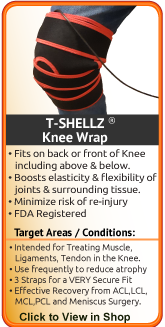     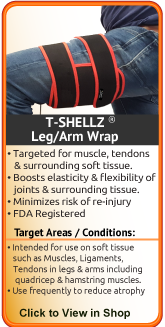 |
